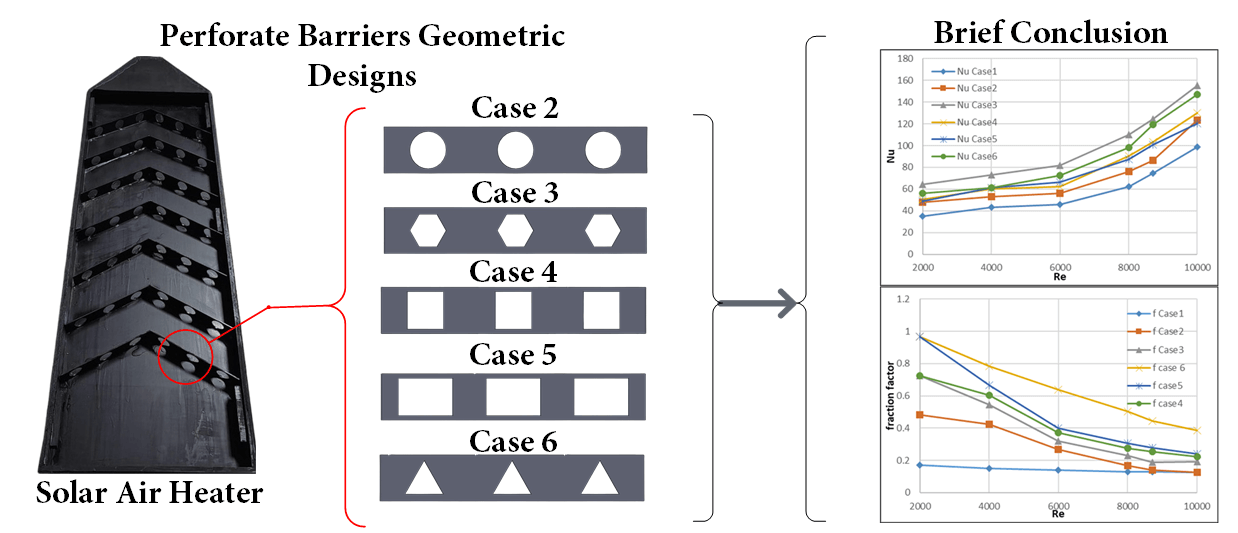 Open Access
Open Access
ARTICLE
Optimizing Solar Air Heater Performance Using Perforated V-Shaped Barriers with Varied Geometric Designs
Electromechanical Engineering Department, University of Technology, Baghdad, 10066, Iraq
* Corresponding Author: Ameer Abed Jaddoa. Email:
Frontiers in Heat and Mass Transfer 2025, 23(2), 703-719. https://doi.org/10.32604/fhmt.2025.063118
Received 06 January 2025; Accepted 12 March 2025; Issue published 25 April 2025
Abstract
To improve the heat transfer rate and thermal performance of the solar air heater due to low efficiency, new techniques, such as artificial roughness, barriers, and obstacles, should be used to increase the heat exchange between the fluid and the absorber. In this research, perforated V-shaped blockages with new geometric shapes, which are circular, hexagonal, square, rectangular, and triangular, were used. They were fixed on the absorber plate inside the channel with dimensions of 1.5 m × 0.5 m × 0.05 m, which increased the exit temperature of the air passing through the channel. The experimental work consists of six cases that were carried out during November in Baghdad, Iraq, to obtain an optimal result. These cases included using barriers that have holes with different geometric shapes for the barriers inside the solar air heater in addition to the reference case without any barriers. A comparison is made between the cases under the same conditions and limits to reach the optimal case. The range of mass flow rate was from 0.0098 to 0.049 kg/s, and the range of Re was from 2000 to 10,000. Another goal of the comparison was to maximize Nu and minimize the friction factor. The Nu value improved by 1.77 and the fraction factor by 1.75 for the hexagonal perforated, which had the best performance. As for the triangle perforated, Nu improved by 1.58 and the fraction factor by 3.84, which had the worst performance. The Nu value improved by 1.39, 1.22, and 1.4, and the fraction factor improved by 1.967, 1.28, and 2.33 for square, circular, and rectangular, respectively. The thermal efficiency is evaluated by analyzing the heat losses from convection with the surrounding air and long-wave radiation exchange with the atmosphere. The experimental results indicated that using barriers with hexagonal holes is the best performance.Graphic Abstract

Keywords
Cite This Article
 Copyright © 2025 The Author(s). Published by Tech Science Press.
Copyright © 2025 The Author(s). Published by Tech Science Press.This work is licensed under a Creative Commons Attribution 4.0 International License , which permits unrestricted use, distribution, and reproduction in any medium, provided the original work is properly cited.


 Submit a Paper
Submit a Paper Propose a Special lssue
Propose a Special lssue View Full Text
View Full Text Download PDF
Download PDF Downloads
Downloads
 Citation Tools
Citation Tools